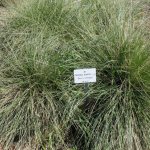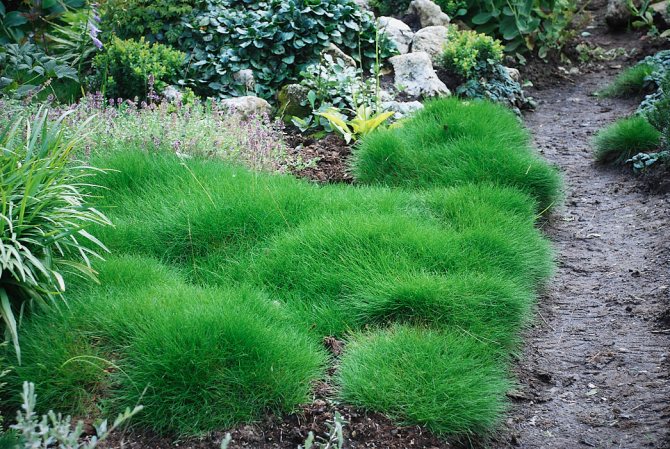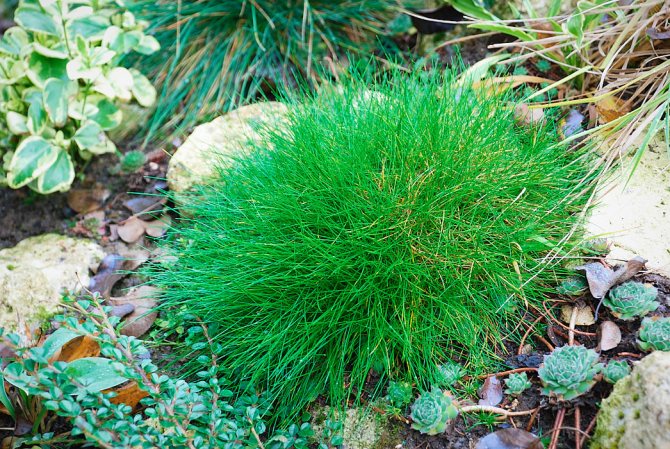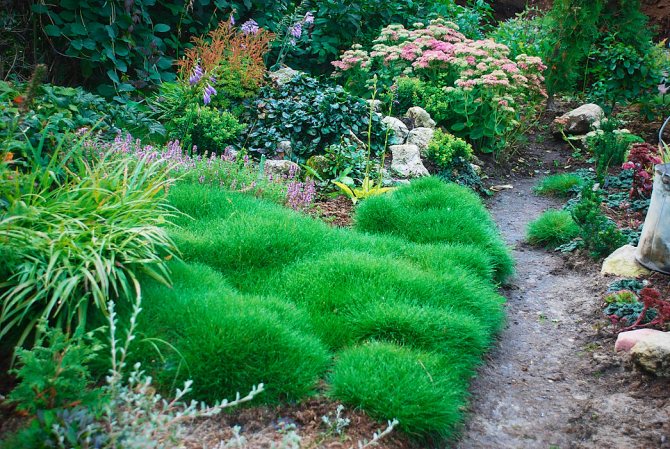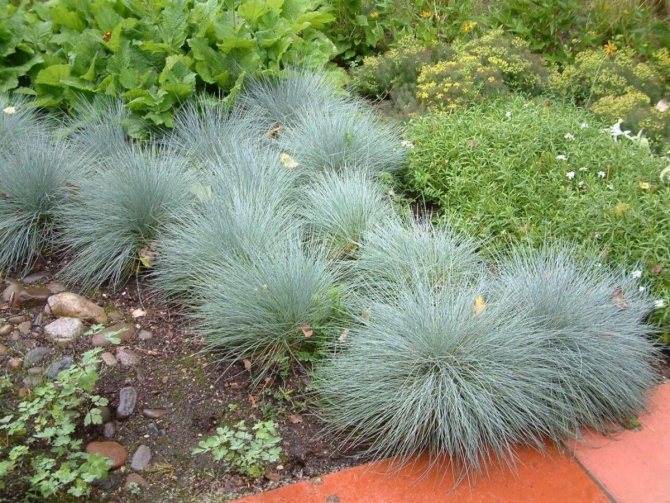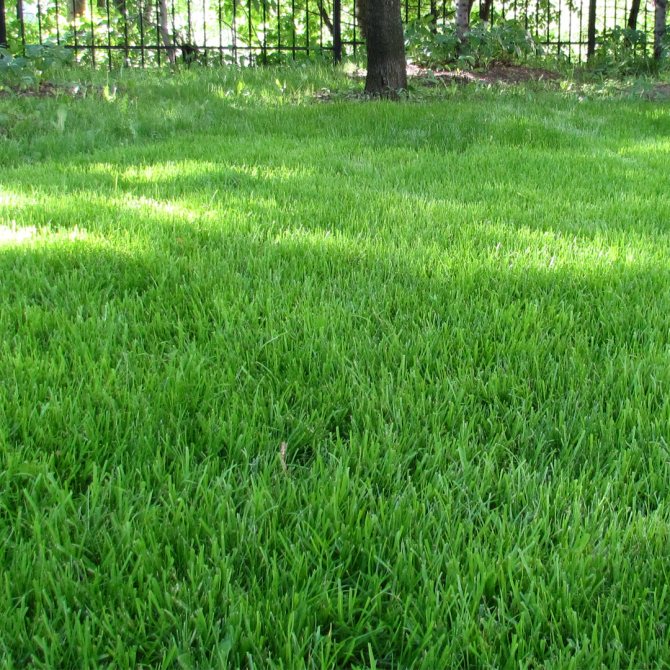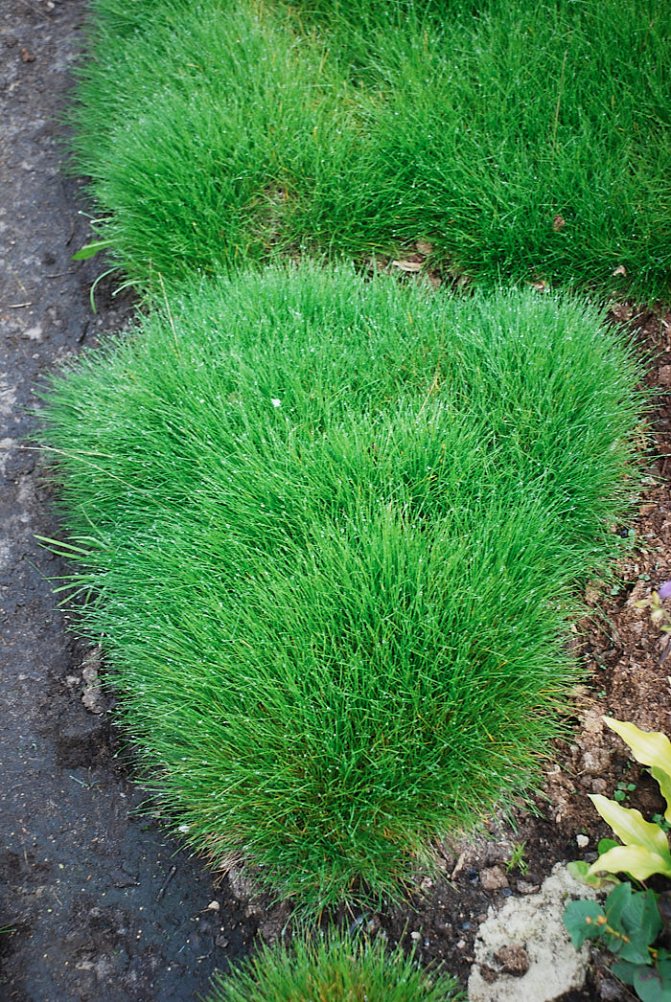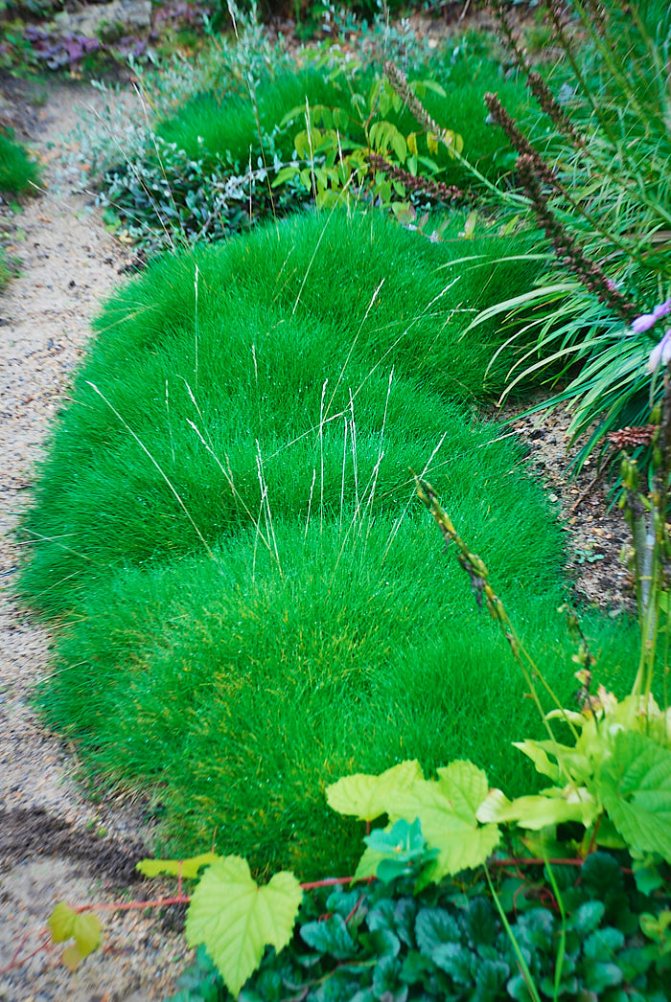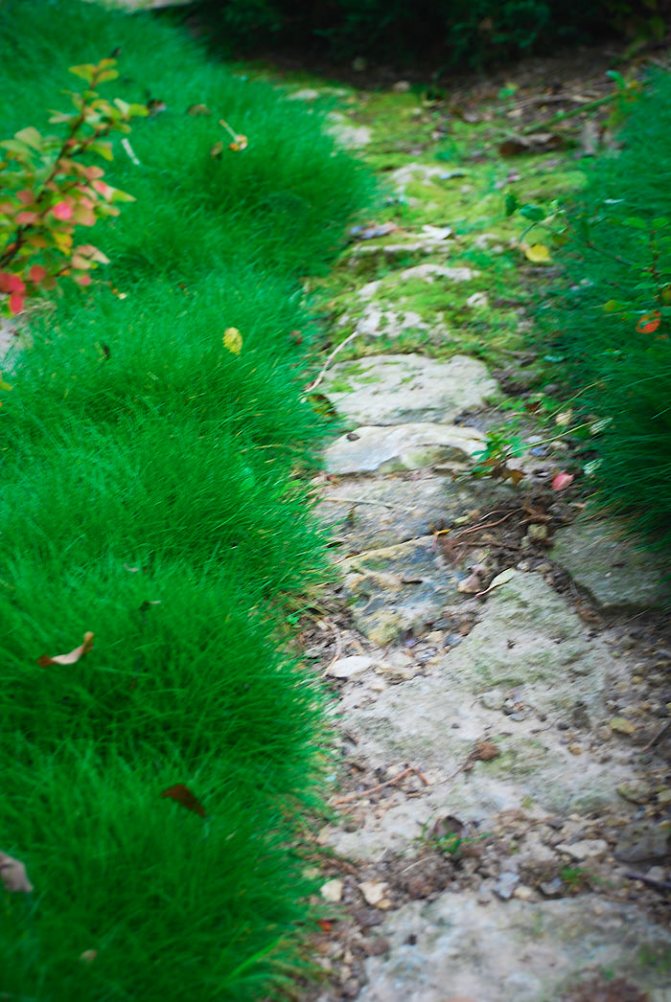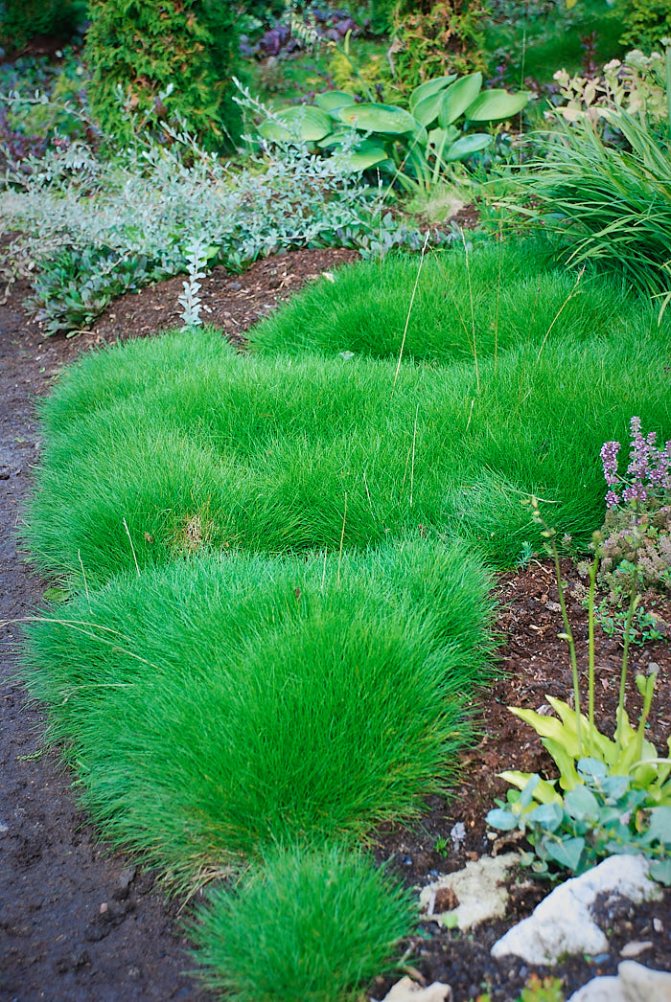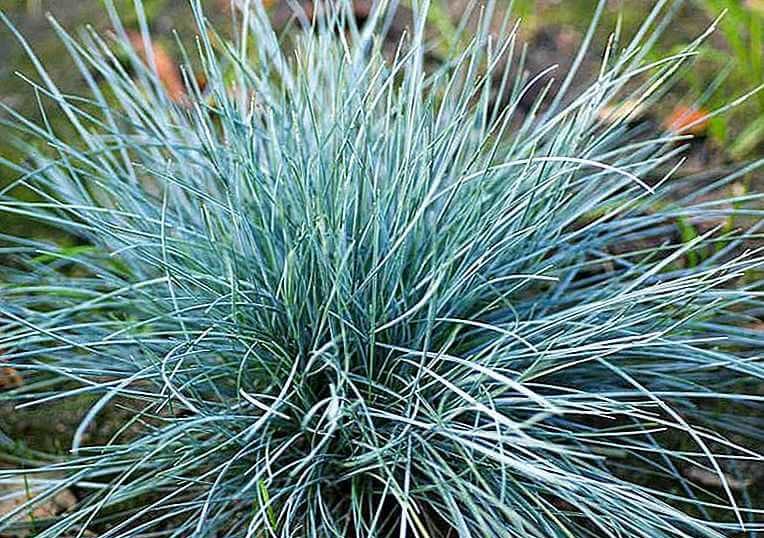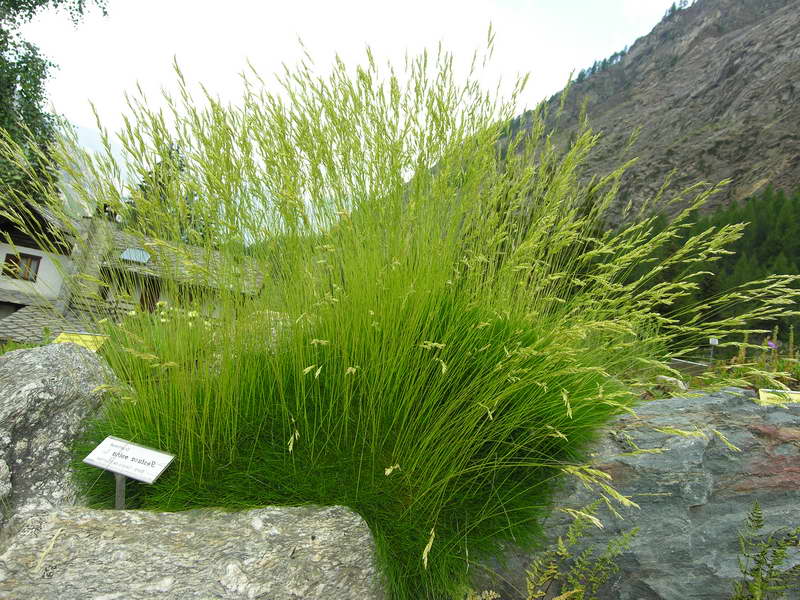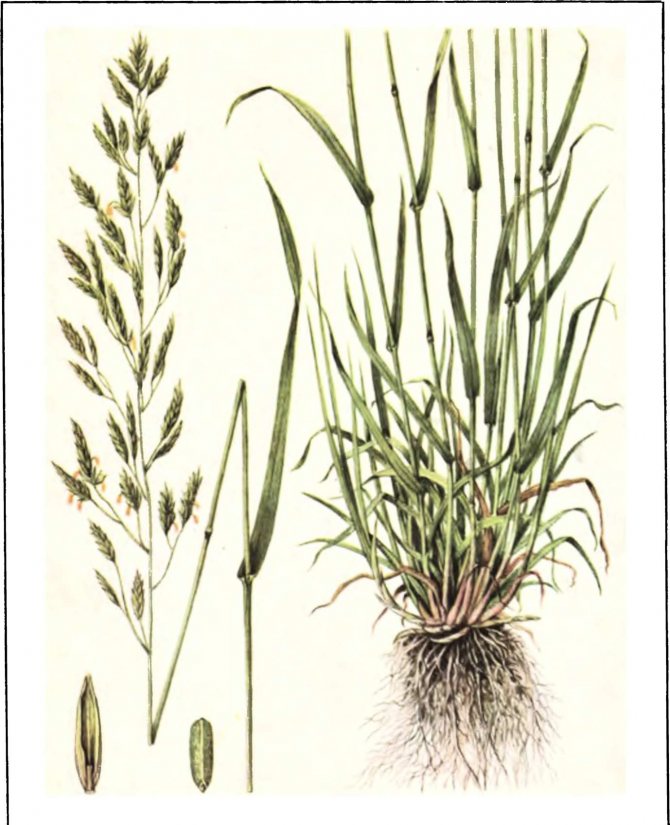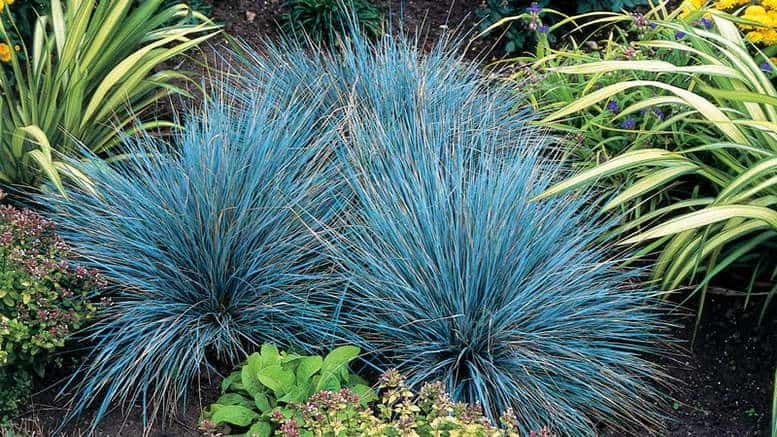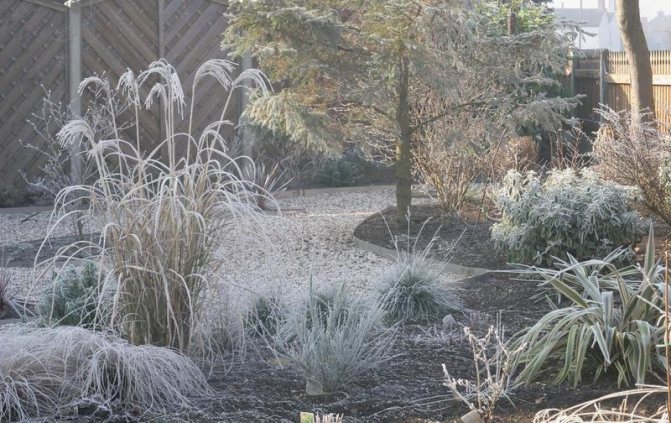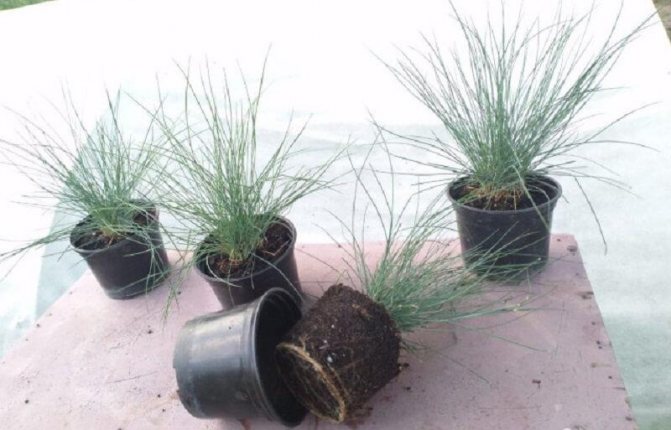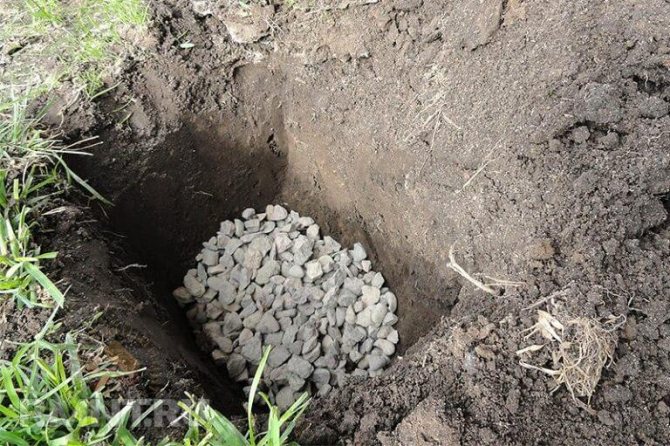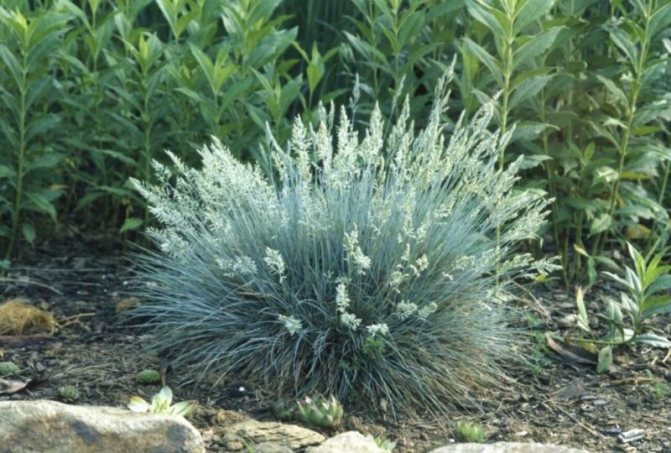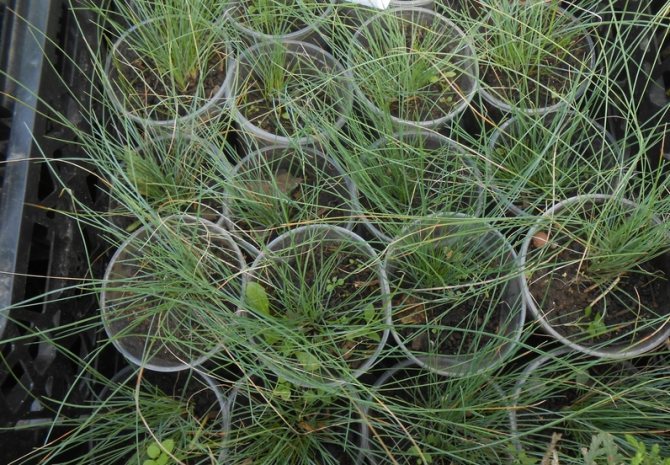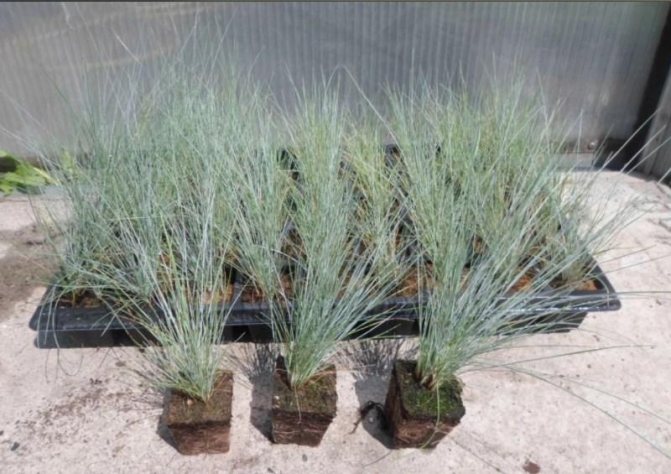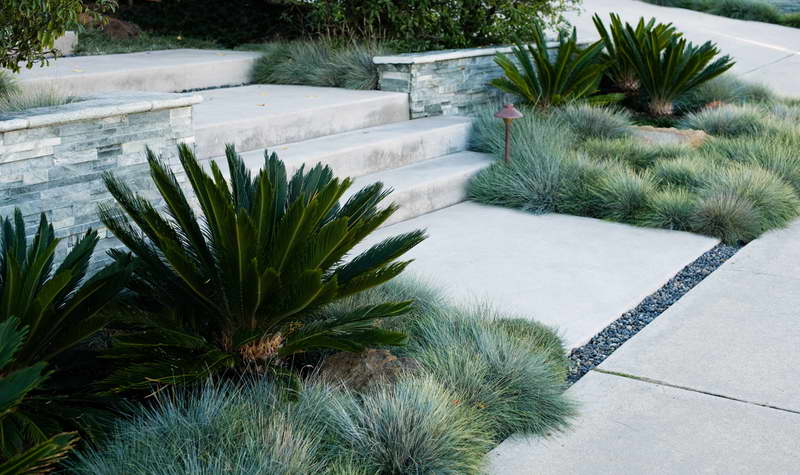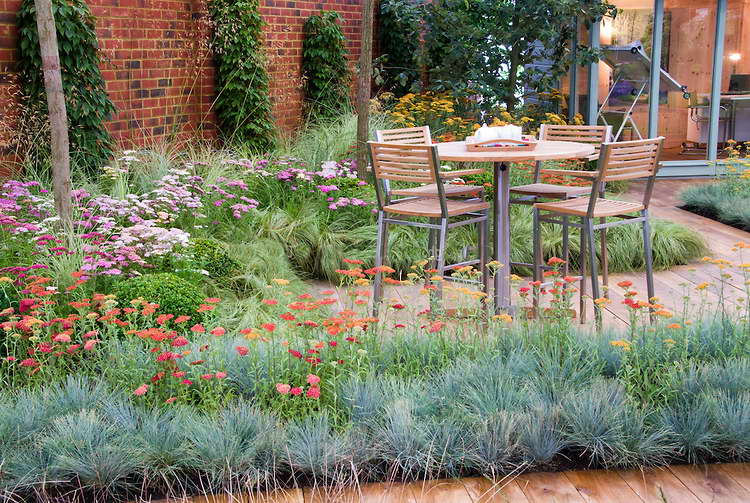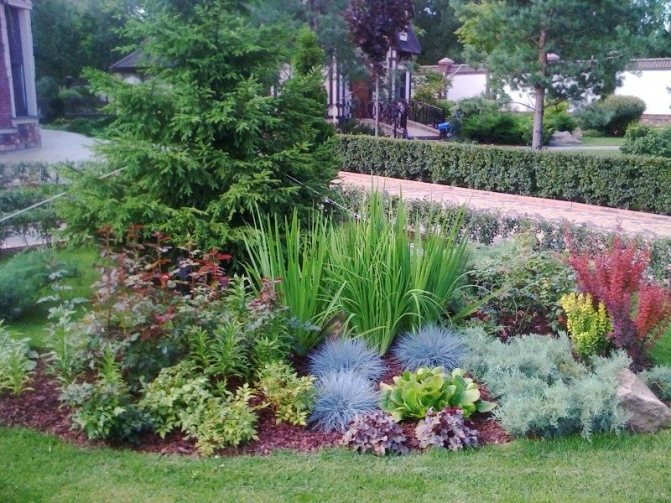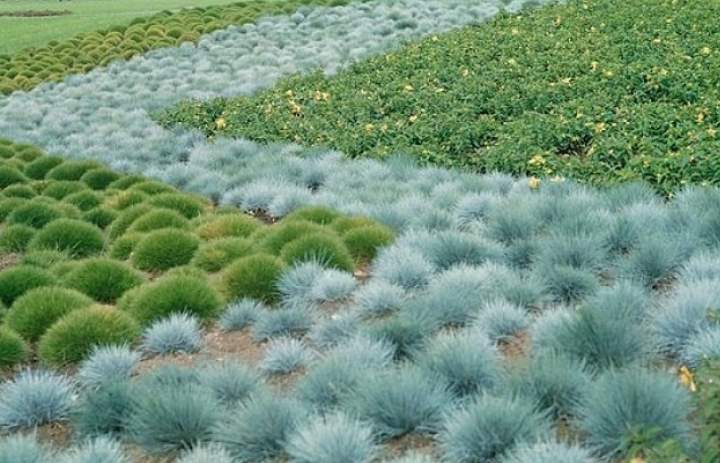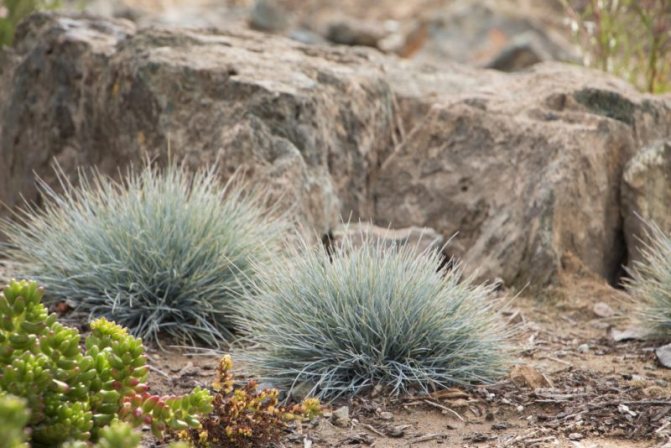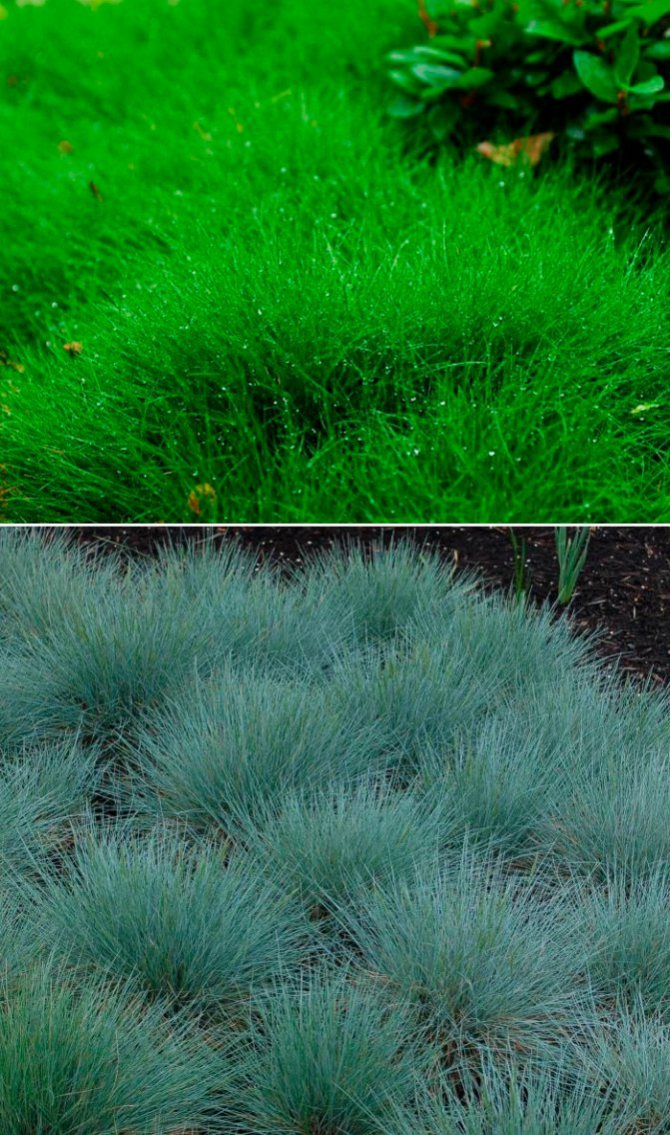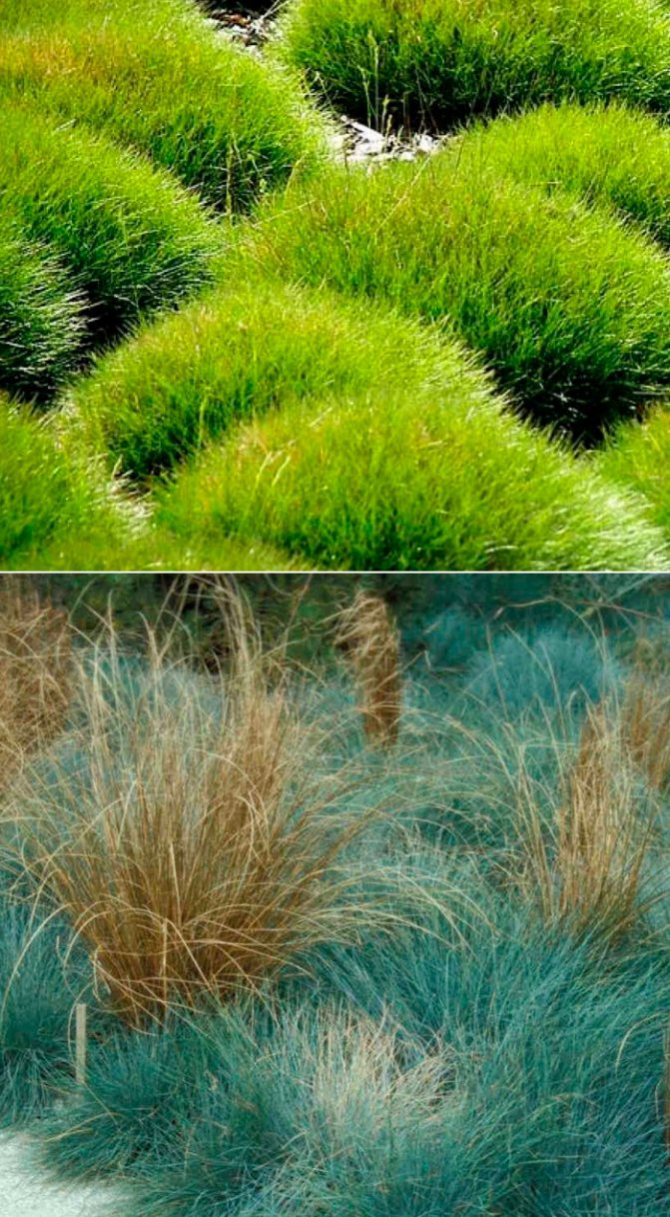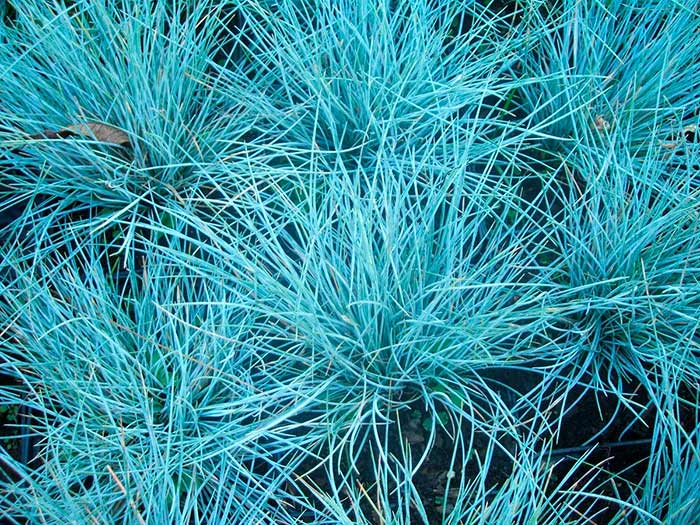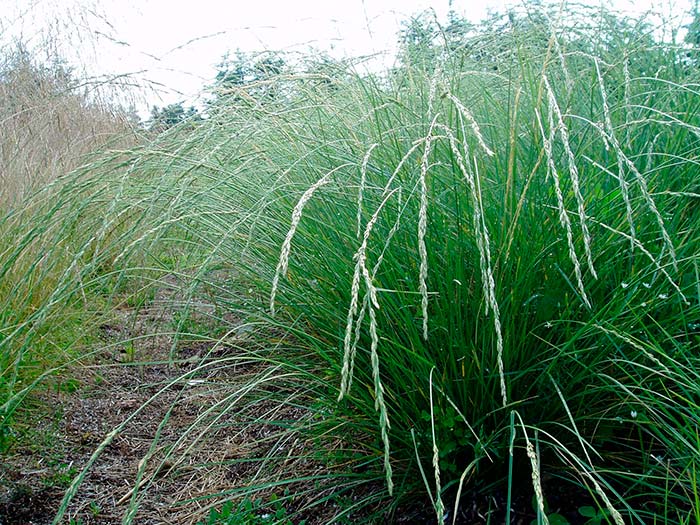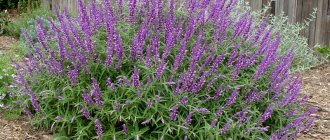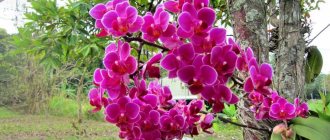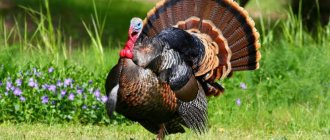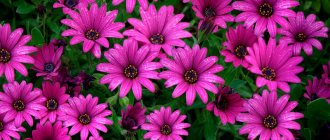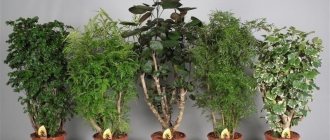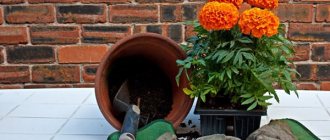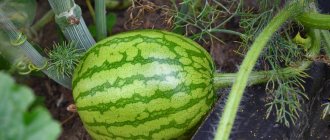Species diversity
Lapis lazuli
The following varieties are currently popular:
- Lapis lazuli - a low-growing variety with a height of 20 cm, a compact and dense bush, steel-colored leaves with a blue tint, the beginning of flowering occurs in June - early July, suitable for growing in a temperate climate of the middle zone.
- Varna - the height of hemispherical bushes is up to 30 cm, the leaves are narrow, needle-like, the color of the leaves is gray-blue, the variety looks spectacular throughout the season.
- Blue - a variety with regular spherical bushes up to 40 cm high, with spectacular bright blue foliage.
- Auslis - a very elegant variety with spherical dense bumps up to 25 cm high, leaf plates are very narrow, intense blue with a bluish tinge, inflorescences are blue, located on the tops of thin shoots above the leaves, reaching maximum decorativeness 3-4 years after sowing.
Note: all varieties of this plant are sown at the same time and are grown in almost the same way.
Among the varieties, most differ from each other very slightly only by the shade of the foliage, but they have different sizes of bushes.
Myra fescue (Mayeri)

The native place of growth of this fescue is the Atlas Mountains at an altitude of more than two kilometers. Each Myra bush forms a beautiful neat mound of flat gray-green foliage up to 60 cm high. Thin and very graceful panicles bloom in June. This fescue perfectly tolerates heat and stagnant water. It grows slowly, but an adult shrub is very durable. Mayeri are planted on flower beds, ridges, mixborders and curbs.
Did you know? It has been proven that plants react to people like living things. An experiment was carried out in which one person tore off the petals of a flower, and the second looked after him with special care. With the help of special devices, a different reaction to two people was recorded.
Landing rules
Planting begins with the choice of a place suitable for lighting, soil, humidity.
Seat selection
In order for the gray fescue to show all its decorative effect, it must be planted in a place well-lit by the sun.


Even a slight shade from taller neighboring plants can negatively affect the color of the leaves, the growth and splendor of the bumps. There are no special requirements for the soil.
Advice: moderately fertile, but always light and well-drained soil is suitable.
Avoid planting fescue in low, damp, dark areas. It will not only lose color, but can also die from root rot.
Preparing for landing
The selected bed must be dug onto the bayonet of the shovel. Under the digging of very poor soils, it is advisable to add a mixture of:
- 5-6 kg of humus;
- liter cans of ash;
- 5 kg of sand.
You can sow seeds either directly in the open, or grow fescue through seedlings.
Squat fescue
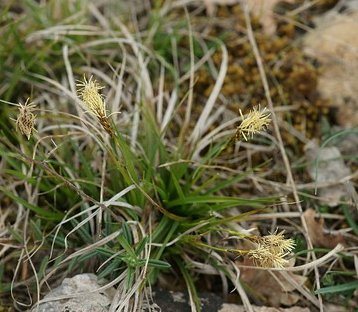

The smallest representative of fescue with small curtains. It has short narrow leaves, but the plant looks graceful and impressive among the stones. Towards the end of summer, it branches out in panicles of small flowers. Until late autumn, you can admire the silvery-gray inflorescences of squat fescue.It reproduces by division and seeds.
Landing in open ground
Sowing in open ground should be done in a nesting way. This will allow you to quickly form a correct and lush bump. Sowing in the ground is carried out mainly in the spring, although autumn sowing is also permissible.
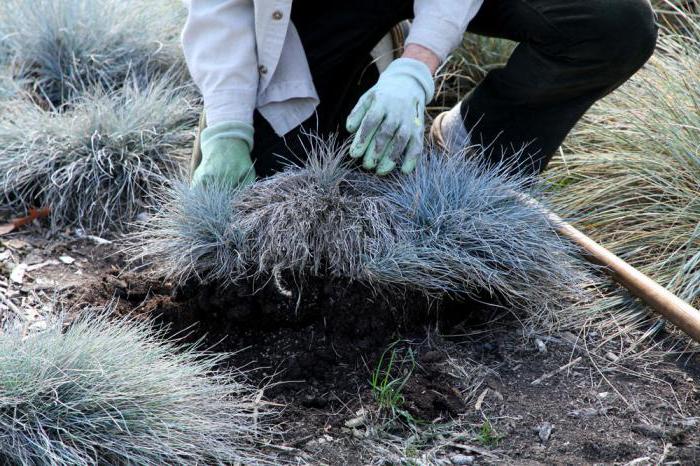

Keep in mind: before planting, pour the seeds with a pink solution of potassium permanganate for 30 minutes.
By mid-May, make a round hole on the prepared soil. At a depth of about 2 cm, spread 5-7 seeds evenly in a circle.
Cover the seeds with earth, water well. After about a week, green shoots will appear, which begin to grow rather quickly.
Combination with other plants
The idea of using cereals in garden design came about thanks to the versatility of the plant and the ability to create bright contrasts of colors, shapes, sizes. Gray fescue is an ideal background and complement for roses, yarrow, rhodiola, peony, carnation, geranium, violet, echinacea and many others. Acting as an array with low-growing plants, fescue is combined with lungwort, cuff, geyher, tradescantia. Great in addition to such tapeworms: Volzhanka, Miscanthus. Near garden furniture and other designer utensils, it is harmoniously combined with wildflowers: poppies, daisies, cornflowers and salvia. Framing the tracks, it effectively interacts with the hare's tail.
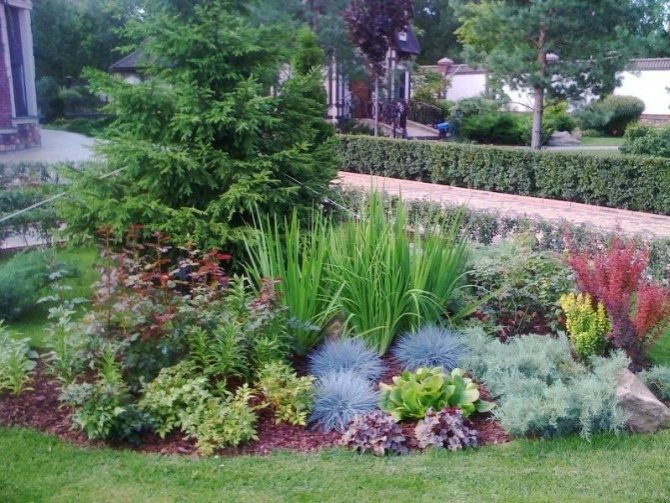

But gardeners' design ideas are endless. They created a flower garden without flowers, with the participation of fescue. Skillfully combining decorative types and varieties of cereals, natural picturesque islets are obtained. Considering the height, shape, color and spreading of adult cereals, designers plant them along curbs, tall boulders and garden furniture. Choosing an open area for planting, a mini-garden of cereals will be visible at different points of the personal plot. The most popular "neighbors" of gray fescue from cereals are maned barley, haretail, blue elimus. A flower bed that catches any breath of wind is a fresh and original solution for a country house. Plants can be planted in semicircular tiers or rows.
Needle compatibility has become a classic. The combination of emerald green and silver-blue colors will give the landscape an exotic southern look. Such a combination will decorate the site all year round, refreshing in the heat of summer and dynamically performing in the snowy winter. The combination can take the place of the main mixborder or the area near the entrance to the garden. The texture of cereals gives the needles a flowing look and complements the ensemble, Fescue is able to emphasize all the overflow of shades of coniferous shrubs or trees. Cereal bushes are combined with juniper, western thuja, pea cypress.
Growing through seedlings
The best time to sow seedlings of this ornamental grass is in mid-March. Seedling boxes should be filled with light soil. Sod land mixed with sand in a ratio of 3 to 1 is suitable.
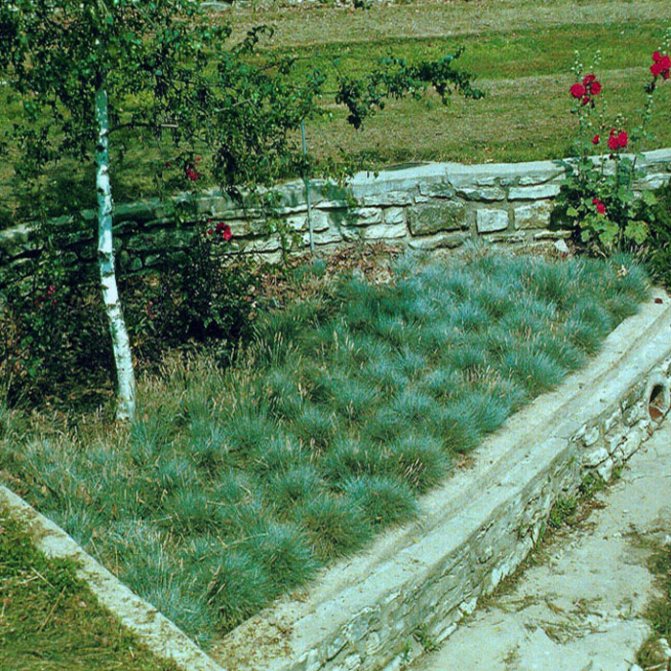

Spray the primer on top with water. Spread the seeds, cover them with a layer of soil 0.5 - 0.6 cm, spray the crops again. Cover with glass, send to a warm place lit by the sun.
As soon as the first seedlings hatch, the glass can be removed, and the seedlings can be rearranged in a cooler, but also well-lit place. When growing seedlings of fescue, do not excessively moisturize the seedlings, this can cause them to lodge and die.
As soon as two leaves appear on the seedlings, the seedlings can be planted in separate pots, several pieces at a time, so that later they can also be transferred in a group into one hole. You can transplant into open ground at the end of May.
How to care properly
Caring for this perennial is simple. Given the high resistance to lack of moisture, additional watering is needed only in the absence of rain for a long time.
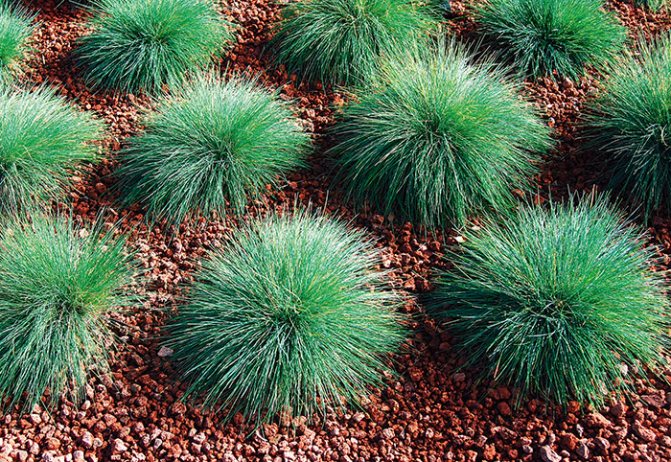

The plant responds well to systematic loosening of the soil. Organic fertilizers can be applied only on very poor soils, and mineral fertilizing should be carried out strictly according to the instructions for them. In most cases, this species does not need feeding.
After winter, you need to manually or with a thick rake remove all old leaves so that the plant has a neat, aesthetic appearance. For the same purposes, you need to cut off all the peduncles.
Recommendation: after three to four years of growth in one place, the hummock may lose its attractiveness. To avoid this, every two to three years, the bush must be dug up, divided and planted again.
The plant's winter hardiness is quite high, however, plants no older than 3-4 years winter better.
Highest fescue
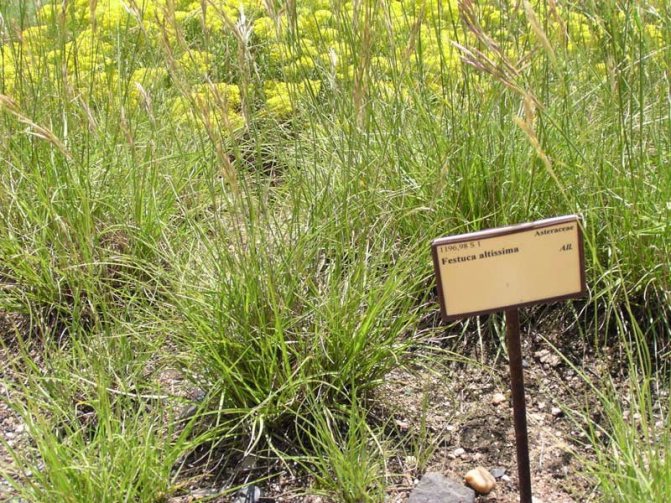

It grows on brown and gray forest soils, as well as on sod-podzolic soils. The tallest fescue is a monoecious plant with leathery, scaly leaves at the base. The vaginas are split almost to the bottom and rough to the touch. The leaf blades are flat, there are no ribs on top. Multi-spike panicles with widely spread rough branches. Spikelet scales have a leathery cover. The lower flower scales are rough over the entire surface and are about 6 mm long. Anthers are 3.5 mm long. The apical ovary is densely hairy.
Breeding methods
This decorative cereal can be propagated by seeds and vegetative parts. To collect the seeds, you need to leave a few well-developed large inflorescences. Cut the panicles with seeds, dry them, and then extract the seeds from them.


Take a note: it is more convenient to propagate varietal plants by dividing the bush, and species can be propagated both by seeds and by dividing the bush.
For reproduction by dividing the bush, it is necessary in the fall, even before the onset of frost, to dig out several mother bushes, transplant them into pots. Keep pots in a cool and dry place in winter. For this, a cold greenhouse, a glazed veranda is suitable.
In March, the bush is divided and planted in separate containers filled with a mixture of earth and sand. With the onset of heat, the cuttings are planted in open ground. You can propagate the plant by dividing the bush with a planned transplant.
Sheep fescue


It grows naturally in Ukraine and Western Europe. A friable plant with thin, triangular stems upward. The leaves are sinuous, long, thin and bristly. The panicle is elongated, loose, with deflected branches. Spikelets are light green in color.
It is used on curbs and large flower beds, paths and near water. Sowing the lawn is the calling of sheep's fescue. Grows well on dry, sandy and impoverished soils. When fertilized, it forms a dense grass carpet that penetrates deeply and firmly into the soil. It is successfully used on dry slopes. Due to its low growth, it is successfully used on dry slopes. Sheep fescue tolerates strong trampling and mowing up to 3.5 cm. It grows well in partial shade and under pine trees. On dry sandy soils, red fescue becomes its partner. They make an extraordinary natural carpet with a certain gradient effect.
Diseases and pests
The plant is quite resistant to disease. If the moisture regime is violated, an overabundance of organic matter, the plant can get sick:
- anthracnose;
- powdery mildew.
If there is a threat of infection, the bushes need to be treated with drugs:
- Speed;
- Ridomil Gold;
- Horus.
Of the pests, a spider mite can threaten decorative perennial grasses in too dry hot weather. Preventive spring treatment with Actellik will save him from it. Re-processing should be done in the middle of summer.
It is important: you need to work with drugs strictly according to the instructions.
If the plant is planted on soils that are too fertilized with organic matter, then it may be threatened by the larvae of May beetle. Proper cultivation and treatment with antihrush or prestige preparations will save the cereal from gluttonous larvae.
Siberian fescue
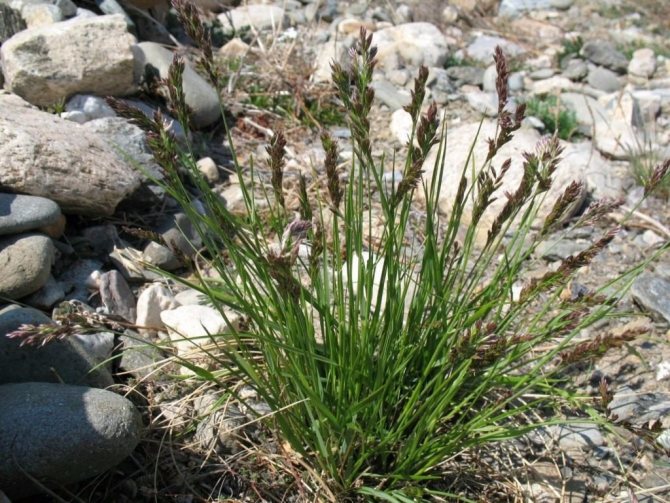

The plant grows in nature in Siberia, Manchuria and Mongolia on slopes, rocks and sometimes on sands. Siberian fescue is a dioecious plant with light gray shoots. Slightly spreading panicles with rough branches. Spikelet scales are almost completely webbed and differ markedly from the lower scales. The latter are uniformly covered with small spines on the outside and pointed towards the apex. The ovary is dense and hairy at the apex. Caryopses are free, grooved on the ventral side, with a long linear seed scar.
Transplant and preparation for winter
The plant needs rejuvenating transplants every 3-4 years. This will help not only to preserve the decorative effect of the bush, but also to increase frost resistance. Young bushes tolerate winters much better than plants older than 4-5 years.
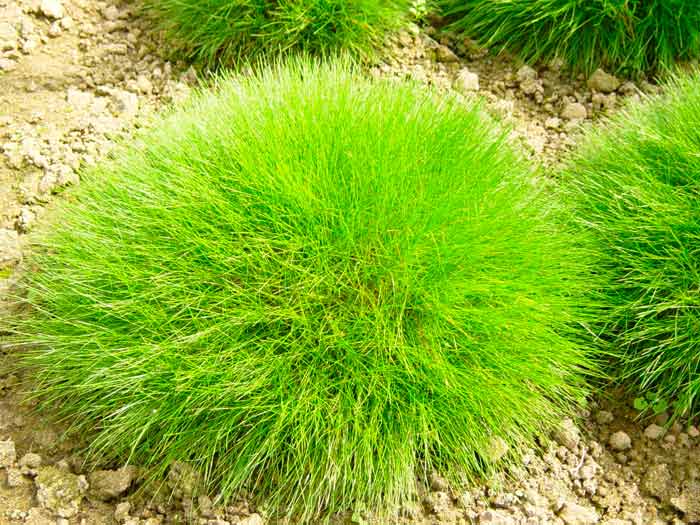

The transplant is carried out in the spring, it can be combined with dividing the bush for reproduction... Old plants are carefully dug up, divided into 2-3 parts with a clean knife. In the pre-dug soil, holes are made, where a new plant is transplanted.
If the plant is grown correctly, a rejuvenating transplant is carried out for it in a timely manner, then special preparation for winter is not required.
Advice: if you plant bushes on the site that have already grown in these conditions, then they are not threatened with freezing. If new seedlings are received from the nursery, then in the first winter they need to be covered.
In the snowless winter, the hummocks should be covered with straw or spruce branches.
Comfortable conditions for fescue
Blue fescue is a member of a large family of ornamental grains. Refers to the kind of sun lovers. To succeed in growing, you need to find the warmest or even hottest spot in your garden. Even the most intensely lit south sides will do well. If you plant fescue in a too dark place, then you will not get a bluish shade of the sheets.


These plants do not put forward special requirements for the soil, so that even in completely dry zones, their spherical shape will decorate the site. You should not choose an area where moisture can accumulate, they do not like the described plants and highly nutritious soils. It is believed that the most beautiful fescue grow on the rocky soil of rock gardens and rockeries.
All species of this plant are frost-resistant and therefore do not need protection in winter. But it is still worth purchasing varieties already acclimatized to your climatic zone.
They also have a drawback - the rather rapid extinction of the curtains. After 2-3 years, the center of the sod gradually dries out in the plant, so they need to be constantly rejuvenated and separated.
Fescue is especially strong in width, and not in height, so it will fill the required area well.

